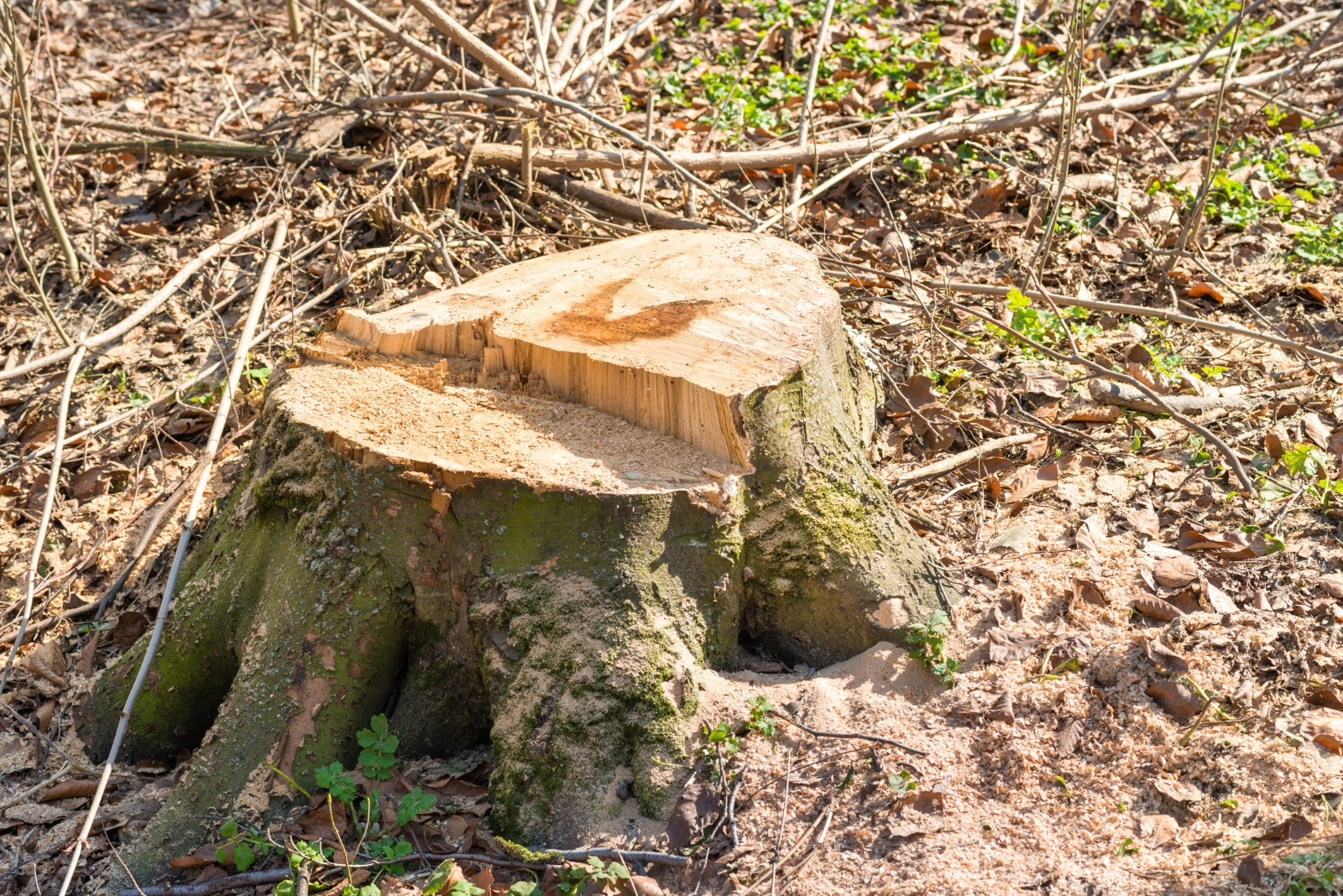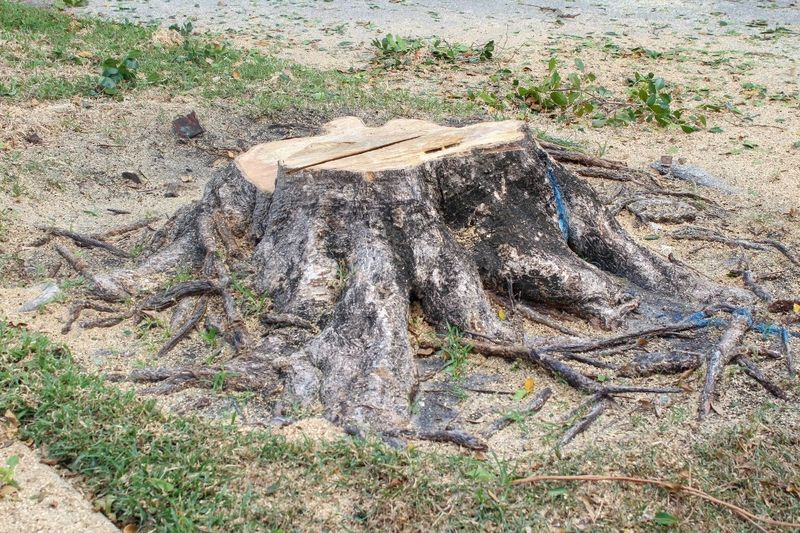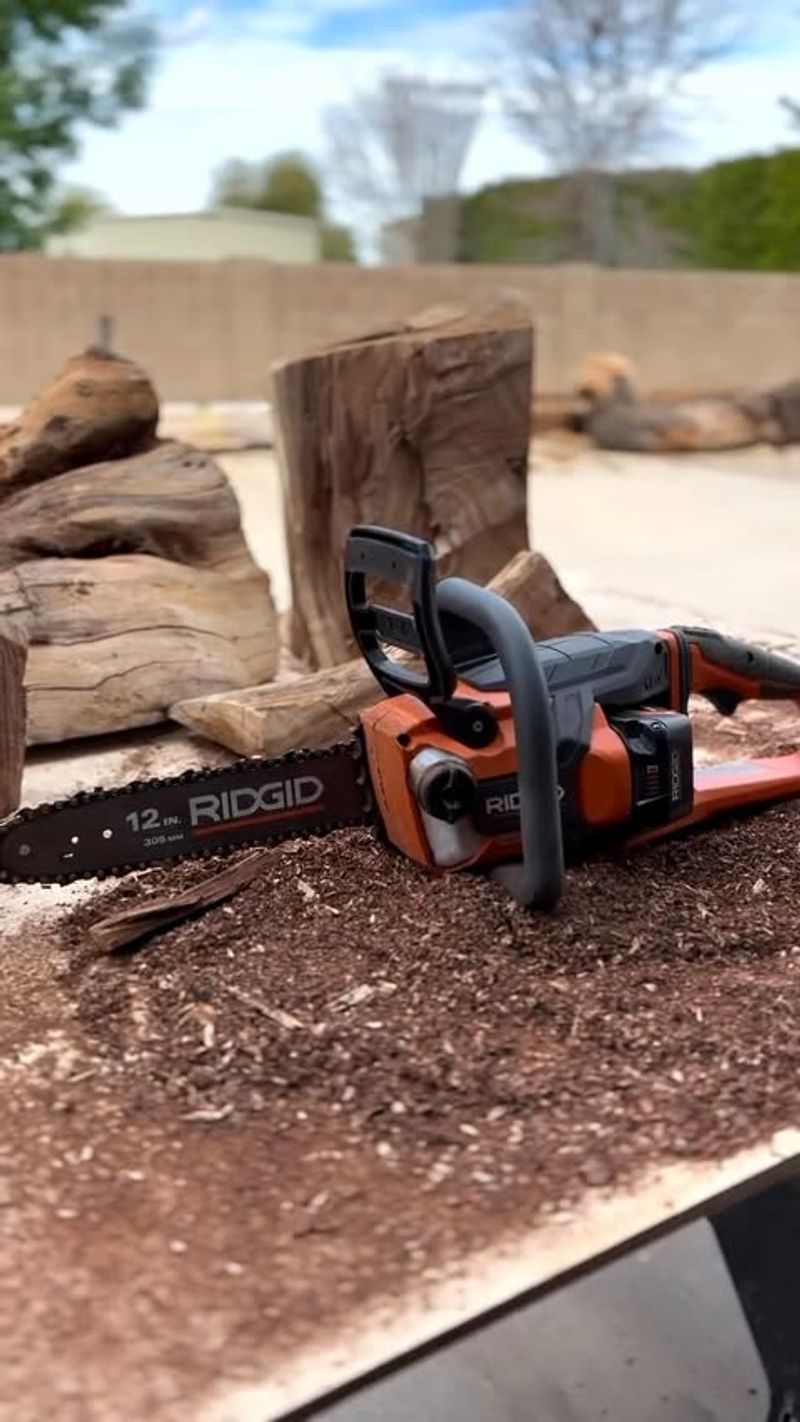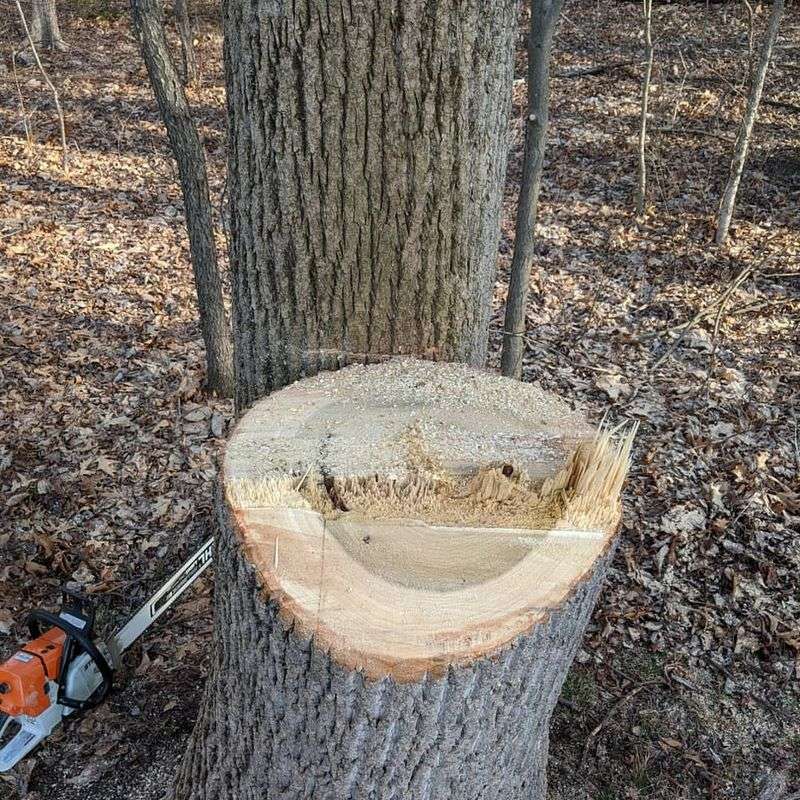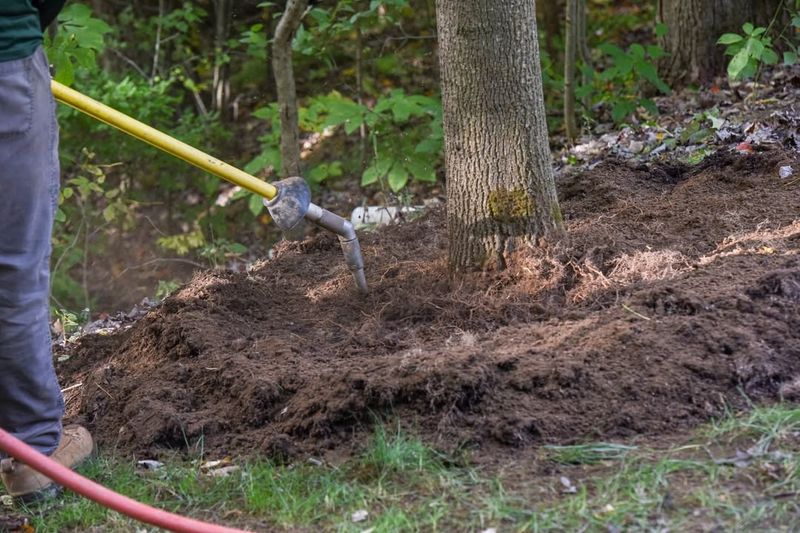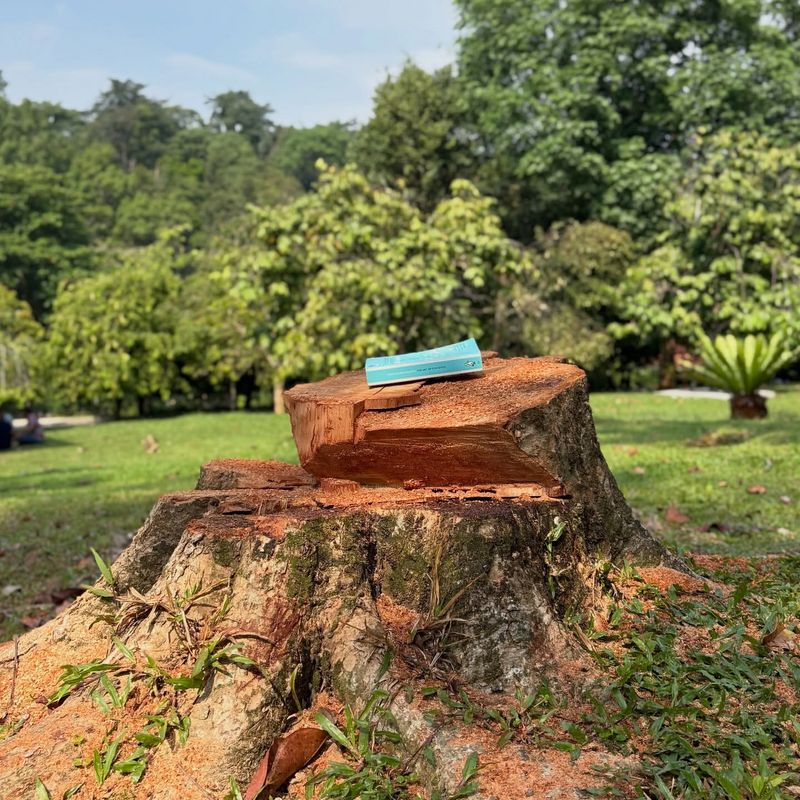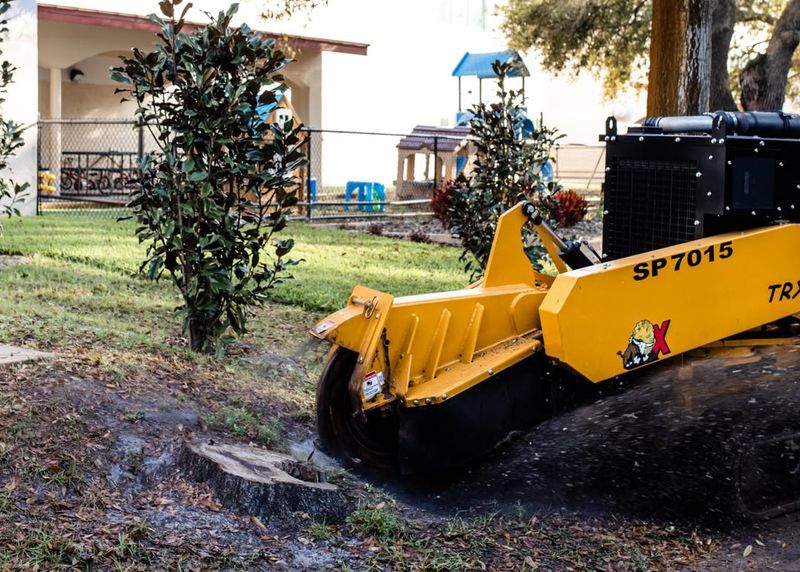Tree stumps can linger long after removal day, attracting pests and making yard work a chore. In Texas and Oklahoma, where dry spells and dense soil slow natural decay, clearing them takes a bit of planning and persistence.
With the right approach, you can break down roots, loosen the base, and reclaim the space for fresh landscaping. A few straightforward steps can make stump removal faster and easier across the Southern Plains.
1. Assess The Stump Size And Root System
Before grabbing any tools, take time to examine what you’re dealing with. Walk around the stump and check its diameter, height, and how deep the roots might extend into the ground.
Larger stumps with extensive root systems in Texas and Oklahoma gardens will require more effort and possibly heavier equipment. Smaller stumps might be manageable with hand tools and some elbow grease.
Understanding the scope helps you choose the right removal method and prevents wasted time on techniques that won’t work for your situation.
2. Gather Your Tools And Safety Gear
Safety comes first when tackling stump removal projects. You’ll need work gloves, safety glasses, sturdy boots, and long pants to protect yourself from splinters and debris.
Essential tools include a chainsaw or handsaw, shovel, pickaxe, drill with large bits, and possibly a stump grinder rental. Don’t forget a wheelbarrow for hauling away wood chunks and roots.
Having everything ready before starting saves trips to the hardware store and keeps your momentum going throughout the project.
3. Cut The Stump As Low As Possible
Using a chainsaw, trim the stump down to ground level or even slightly below if you can manage it safely. Lower stumps are easier to work with and give you better access to the root system.
Work slowly and watch for any nails, rocks, or metal that might be embedded in the wood. These can damage your saw blade and create dangerous kickback.
A lower profile also means less material to remove later, whether you’re grinding, digging, or using chemical methods to finish the job.
4. Dig Around And Expose The Roots
Grab your shovel and start digging a trench around the stump, going at least twelve inches deep and wide. This exposes the major roots spreading out from the base, making them easier to cut.
Use a pickaxe or mattock to loosen compacted soil, especially common in Texas and Oklahoma clay. A garden hose can help wash away dirt from stubborn roots.
The more roots you expose, the easier the stump will be to remove or treat with chemicals for decomposition.
5. Cut Through The Major Roots
Once exposed, use a reciprocating saw, axe, or loppers to sever the main roots connecting the stump to the ground. Start with the thickest ones first, working your way around the entire perimeter.
This step requires patience and muscle, but it’s crucial for loosening the stump’s grip. Take breaks as needed to avoid exhaustion or injury from repetitive motions.
After cutting through all major roots, the stump should wiggle more freely, signaling you’re ready for the final extraction or treatment phase.
6. Remove Or Grind The Stump
For immediate results, rent a stump grinder and methodically grind the remaining wood into mulch, going several inches below ground level. Stump grinders make quick work of even stubborn stumps in Texas and Oklahoma.
Alternatively, use a pry bar or come-along winch to rock and pull the loosened stump from the hole. This method works best on smaller stumps with severed roots.
Chemical stump removers offer a slower option, breaking down the wood over weeks, making it easier to remove or burn out later.
7. Fill The Hole And Restore Your Yard
After removing the stump, you’ll have a sizeable hole that needs filling. Use a mix of topsoil and compost to fill the depression, packing it down firmly to prevent settling.
Add grass seed or sod to match your existing lawn, watering regularly until new growth establishes. In Texas and Oklahoma’s hot climate, keep the area moist for best results.
Within weeks, your yard will look like the stump was never there, giving you clean, usable space for landscaping, play areas, or garden beds.

